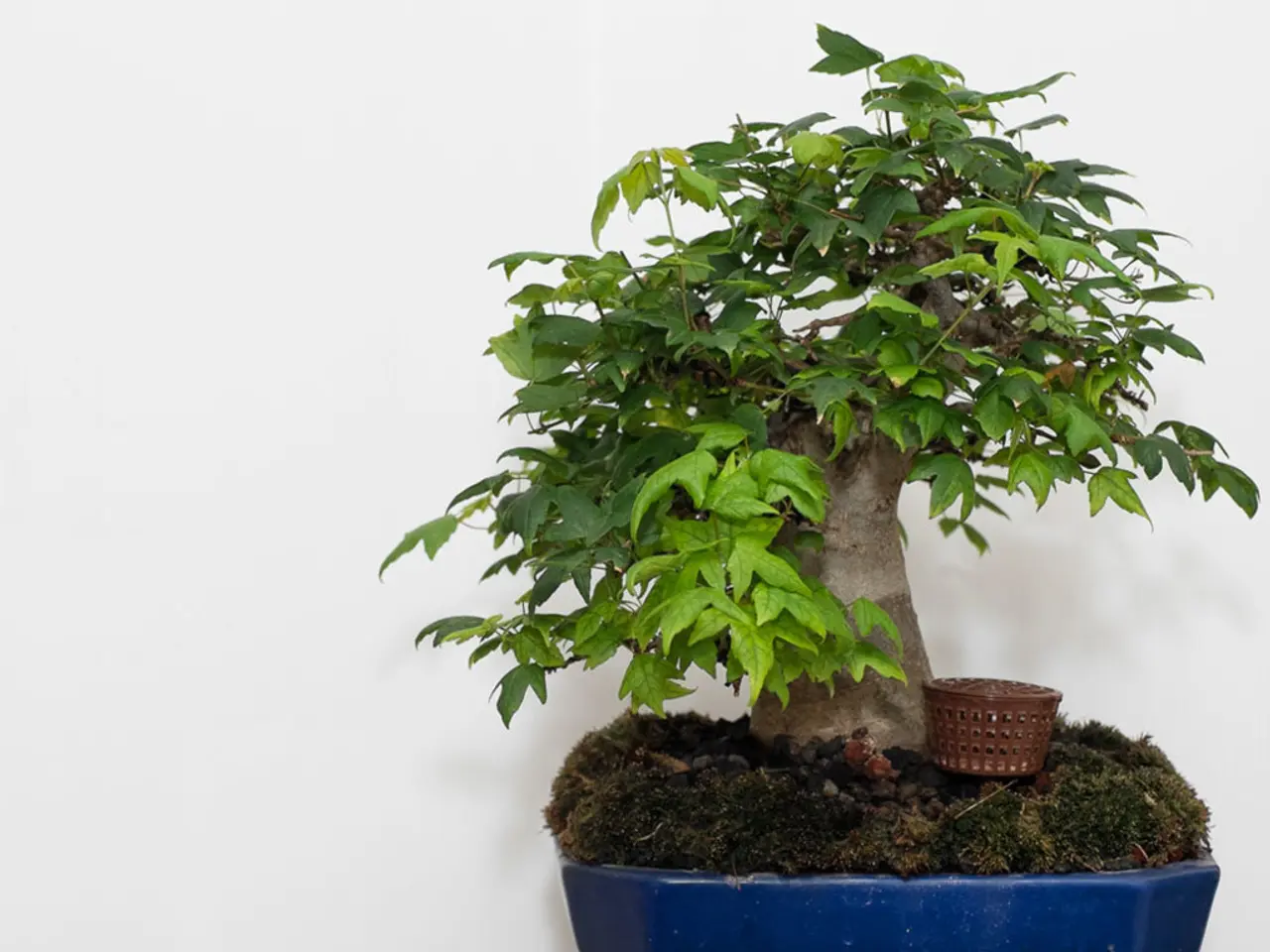Techniques for Inducing Branching on Bonsai for Denser Leaf Growth
Improving Back Budding in Bonsai Trees
Bonsai enthusiasts can enhance the growth and vitality of their trees by mastering the art of back budding. This technique encourages bonsai trees to produce new shoots and leaves, transforming the shape and appearance of the tree.
To begin, it's essential to identify suitable branches for back budding. Choose healthy, mature branches with visible nodes or buds close to the trunk or main branches. Avoid weak or diseased branches, as these may not respond well to pruning.
Perform selective pruning rather than indiscriminate trimming. Cut just above a node to encourage side shoots and back budding. For some species, such as Bald Cypress bonsai, hard cut-back techniques can promote vigorous new growth from dormant buds. Prune during the active growing season to maximize the tree’s natural healing response and back budding potential.
Maintaining optimal environmental conditions is crucial for back budding success. Keep the soil or substrate damp but not waterlogged to support root and shoot health. Ensure high humidity around the bonsai, which can be achieved by misting or using humidity domes especially after pruning. Provide bright, indirect light to avoid stress from intense direct sunlight while allowing enough energy for new growth. Maintain a moderate temperature range, around 18–24°C (64–75°F), to avoid heat stress or slowed growth. Regularly monitor soil moisture, humidity, temperature, and signs of growth to adjust care as needed.
A well-balanced fertilizer, rich in nutrients, promotes healthy growth and development in bonsai trees. Continue to provide balanced fertilization post-pruning to supply necessary nutrients that support vigorous new growth. Regularly inspect the bonsai for pests, diseases, and overall vigor to ensure long-term health and back budding success.
By combining careful branch selection and precise pruning techniques with optimal environmental conditions and consistent bonsai maintenance, strong back budding can be effectively stimulated and maintained, leading to improved bonsai shape and vitality. If you want specific techniques tailored to a particular bonsai species, such as Japanese Juniper or Bald Cypress, these methods might vary slightly but generally follow the principles outlined above.
In conclusion, a healthy bonsai tree is more likely to respond positively to back budding techniques. Pruning roots can stimulate back budding on older bonsai trees by reducing the root-to-shoot ratio. The mastery of back budding techniques releases the full potential of bonsai trees, revealing a tapestry of emerald foliage. Vigilant attention to bonsai care is crucial for fostering an environment conducive to back budding, ensuring the continued growth and development of these beautiful, miniature trees.
[1] Bonsai Empire. (2021). The Complete Guide to Back Budding Bonsai Trees. Retrieved from https://bonsaiempire.com/academy/articles/back-budding-bonsai-trees/
[2] Bonsai Tonight. (2014). The Ultimate Guide to Bonsai Care. Retrieved from http://www.bonsaitonight.com/ultimate-guide-to-bonsai-care/
[3] Bonsai4me. (2021). Bonsai Back Budding: How to Back Bud Bonsai Trees. Retrieved from https://bonsai4me.com/bonsai-back-budding/
[4] Bonsai Basics. (2021). Back Budding Bonsai Trees: A Step-by-Step Guide. Retrieved from https://bonsaibasics.com/back-budding-bonsai-trees/
[5] Bonsai Focus. (2021). Bald Cypress Bonsai: Back Budding Techniques and Care. Retrieved from https://bonsaifocus.com/bald-cypress-bonsai-back-budding-techniques-and-care/
- To further enrich the home-and-garden lifestyle, consider delving into the art of gardening specific to Bonsai trees, as mastering the technique of back budding can significantly improve their appearance and vitality.
- Beyond creating a visually appealing bonsai tree, the practice of back budding encourages the growth of new shoots and leaves, ultimately contributing to a more lively lifestyle within the home-and-garden.




